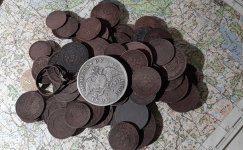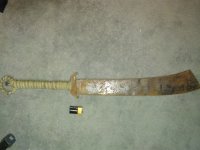Question on shells. I live near the coast in Delaware. I've only been on one dig and found some flakes and chips. Nearby, I found random clam shell fragments about 6 to 12" deep. I recently got permission on another property that seems like it would be good. The owner said when they were digging a post hole, they pulled up some clam shell bits.
My question is, when you find clam shells buried in the soil like this, are they indicative of old Native American land use? Or is there some natural process that random clam shell bits end up in the soil?
My question is, when you find clam shells buried in the soil like this, are they indicative of old Native American land use? Or is there some natural process that random clam shell bits end up in the soil?
Amazon Forum Fav 👍
Upvote
3








